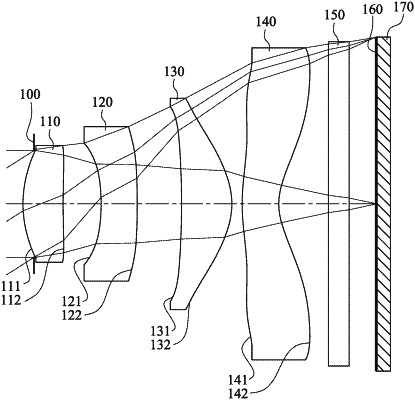| CPC G02B 13/004 (2013.01) [G02B 9/34 (2013.01); G02B 2027/011 (2013.01); G02B 2027/0123 (2013.01); G02B 2027/0138 (2013.01); G02B 2027/015 (2013.01); G02B 2027/0152 (2013.01); G02B 27/017 (2013.01); G02B 27/0172 (2013.01); G02B 2027/0178 (2013.01)] | 17 Claims |

|
1. An optical image lens assembly comprising, in order from an object side to an image side:
a first lens element with positive refractive power having an object-side surface being convex in a paraxial region thereof;
a second lens element with negative refractive power having an object-side surface being concave in a paraxial region thereof;
a third lens element with positive refractive power having an object-side surface being concave in a paraxial region thereof and an image-side surface being convex in a paraxial region thereof; and
a fourth lens element having negative refractive power;
wherein the optical image lens assembly further comprises an aperture stop disposed between the first lens element and an image surface;
wherein an axial distance between the second lens element and the third lens element is a maximum among all axial distances between adjacent lens elements in the optical image lens assembly; a total number of lens elements in the optical image lens assembly is four;
wherein an f-number of the optical image lens assembly is Fno, the axial distance between the second lens element and the third lens element is T23, a central thickness of the second lens element is CT2, and the following conditions are satisfied:
1.50<Fno≤2.10; and
0.80<T23/CT2<2.50;
wherein a maximum of absolute values of curvature radii of object-side surfaces and image-side surfaces of the first lens element, the second lens element, the third lens element and the fourth lens element is an absolute value of a curvature radius of the object-side surface of the third lens element.
|